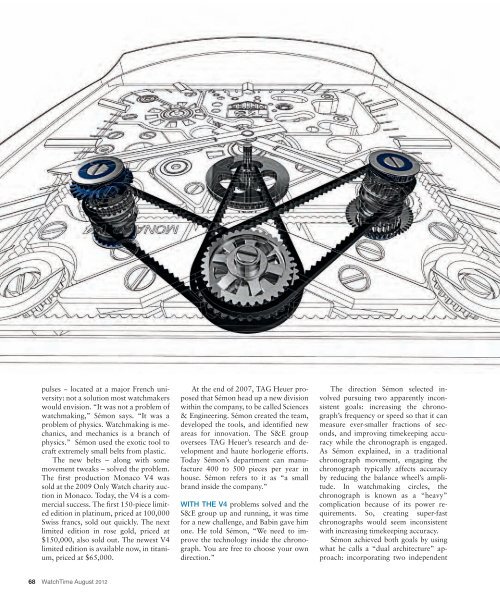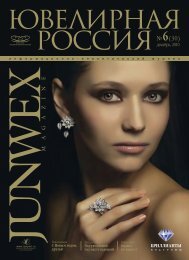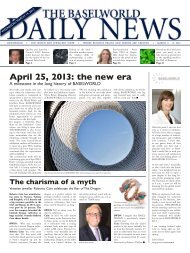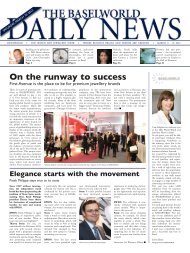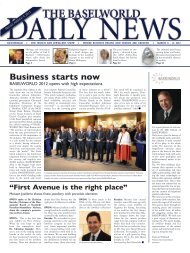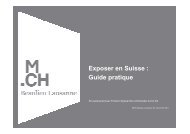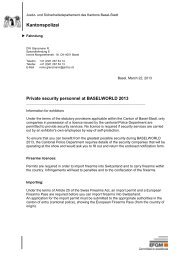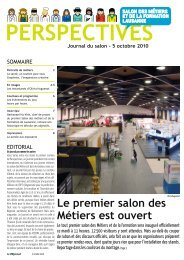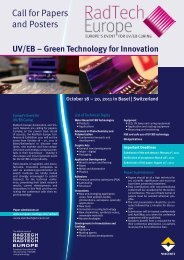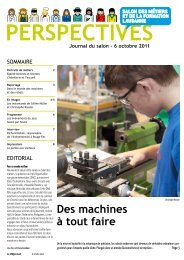WatchTime - August 2012
WatchTime - August 2012
WatchTime - August 2012
You also want an ePaper? Increase the reach of your titles
YUMPU automatically turns print PDFs into web optimized ePapers that Google loves.
PROFILE<br />
TAG Heuer’s Guy Sémon<br />
pulses − located at a major French university:<br />
not a solution most watchmakers<br />
would envision. “It was not a problem of<br />
watchmaking,” Sémon says. “It was a<br />
problem of physics. Watchmaking is mechanics,<br />
and mechanics is a branch of<br />
physics.” Sémon used the exotic tool to<br />
craft extremely small belts from plastic.<br />
The new belts – along with some<br />
movement tweaks – solved the problem.<br />
The first production Monaco V4 was<br />
sold at the 2009 Only Watch charity auction<br />
in Monaco. Today, the V4 is a commercial<br />
success. The first 150-piece limited<br />
edition in platinum, priced at 100,000<br />
Swiss francs, sold out quickly. The next<br />
limited edition in rose gold, priced at<br />
$150,000, also sold out. The newest V4<br />
limited edition is available now, in titanium,<br />
priced at $65,000.<br />
68 <strong>WatchTime</strong> <strong>August</strong> <strong>2012</strong><br />
At the end of 2007, TAG Heuer proposed<br />
that Sémon head up a new division<br />
within the company, to be called Sciences<br />
& Engineering. Sémon created the team,<br />
developed the tools, and identified new<br />
areas for innovation. The S&E group<br />
oversees TAG Heuer’s research and development<br />
and haute horlogerie efforts.<br />
Today Sémon’s department can manufacture<br />
400 to 500 pieces per year in<br />
house. Sémon refers to it as “a small<br />
brand inside the company.”<br />
WITH THE V4 problems solved and the<br />
S&E group up and running, it was time<br />
for a new challenge, and Babin gave him<br />
one. He told Sémon, “We need to improve<br />
the technology inside the chronograph.<br />
You are free to choose your own<br />
direction.”<br />
Drive belts inside<br />
the Monaco<br />
V4’s movement<br />
The direction Sémon selected involved<br />
pursuing two apparently inconsistent<br />
goals: increasing the chronograph’s<br />
frequency or speed so that it can<br />
measure ever-smaller fractions of seconds,<br />
and improving timekeeping accuracy<br />
while the chronograph is engaged.<br />
As Sémon explained, in a traditional<br />
chronograph movement, engaging the<br />
chronograph typically affects accuracy<br />
by reducing the balance wheel’s amplitude.<br />
In watchmaking circles, the<br />
chronograph is known as a “heavy”<br />
complication because of its power requirements.<br />
So, creating super-fast<br />
chronographs would seem inconsistent<br />
with increasing timekeeping accuracy.<br />
Sémon achieved both goals by using<br />
what he calls a “dual architecture” approach:<br />
incorporating two independent


